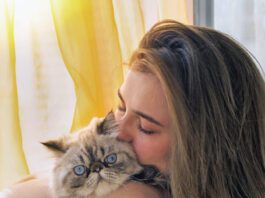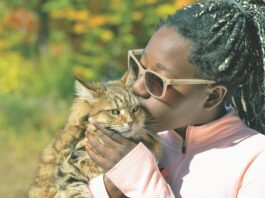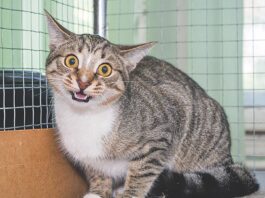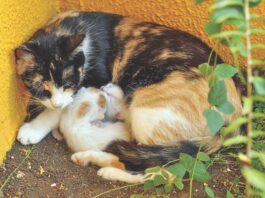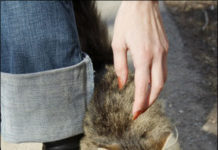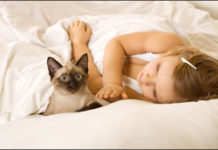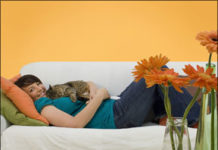Finding a Cat a New Home
Your sister is moving to Japan for her job and she cant take her cat with her. Shes devastated and turns to you for help. But you already have three cats and cant take on another. You cant imagine ever having to give up one of your own cats, but dealing with your sisters situation is almost as bad. What do you do? Someday, you may need to find a home for your own cat. But there are a number of things to try before deciding that a cat cannot stay where she is. And if it becomes absolutely necessary, heres some help in finding her a new home.
Feline Heartworm Infection: Serious
As springtime arrives throughout the U.S., the steamy days and nights of summer cannot be far behind. This means, of course, a proliferation of mosquitoes. For you, this is an annoyance. For your cat, these bothersome little creatures can pose a major health problem. Among all of the various disorders that can endanger a cats physical well-being and perhaps threaten its life, few are more insidious than feline heartworm disease, a potentially life-threatening condition that occurs when a parasitic worm called Dirofilaria immitis gets into an animals system. And the only way in which this worm can enter your cats body is through a mosquito bite.
Your Cats Strange Table Manners
If your cat has ever scratched the floor before or after eating a meal, attempted to cover uneaten food, or plopped a favorite toy into her food or water dish, please raise your hand. Right now, many of you are probably waving your hand in the air and nodding your head knowingly. If suppertime at your house has more the ambience of a junior high school cafeteria than a chic caf, read on. Our Cornell experts help make sense of some of our cats quirkiest food-related behaviors. Eating Etiquette. Scratching around their bowls or trying to cover food is a common, albeit puzzling behavior seen in many cats. Just why our fastidious felines do this remains a mystery, but several theories have been suggested.
Ask Elizabeth: March 2010
Sometimes, I find things which appear to be grains of rice stuck to the fur around my cats hind end. Figaro does go outside, but I cant figure out how he could get rice stuck back there. Do you think hes been rooting around in garbage cans looking for food?
Adopting a Neighborhood Stray
Several years ago I came home to my first apartment and was greeted by my best friend, grinning from ear to ear. "Theres a surprise in your bathroom!" she exclaimed. That surprise turned out to be an adorable stray kitty from her hometown. "Nana" soon revealed herself to be an amazingly adaptive cat that was happy just basking in our love and attention, but the road to domestic bliss was certainly not without its bumps. In hindsight, there were several steps we could have taken to make the transition a bit smoother. In fact, there are several potential problems when bringing an outdoor cat (e.g. a neighborhood stray or barn cat) indoors to live; however, if you anticipate these problems - and address them accordingly - they can be greatly minimized.
Short Takes: February 2010
Some involved with animal welfare are critical of free adoptions of adult cats, believing it devalues the cat in the adopters eyes, or it may attract adopters who are unable to fulfill the financial responsibilities of cat ownership. Advocates believe waiving the fee for adult cats will enhance rates of adoptions, and provide opportunities to educate owners who may otherwise adopt from neighbors or may respond to "free to good home" ads.
Indoor Allergies and Your Cat
Though outdoor allergens (substances that can cause the immune system to respond with an allergic reaction), such as pollen, are considered to be the main culprits in causing allergies, indoor allergens, such as the common house dust mite, actually have the potential to be much more reactive. As humans, we generally have the most difficult time with indoor allergens when they are airborne and are inhaled into our upper respiratory tract. Though we consider our feline pets to be members of the family, most cats do not respond to airborne particles with an allergic reaction in the respiratory tract - unless the cat is asthmatic, notes William H. Miller, VMD, professor of medicine, chief of the section of dermatology, and medical director of Cornells Companion Animal Hospital.
Short Takes: December 2009
Pet Style News has awarded Soft-Hearted Products their "Editors Choice Award" for best pet memorial product. Every year, Pet Style News magazine searches for the most innovative new pet products. According to Pet Style News, the Soft-Hearted Pillow is "a major departure from the wood, ceramic and stone urns available on the market. This product gives the mourning pet owner a way to continue to hold and hug the lost pet in the form of a velvet-soft pillow with the pets ashes safely contained inside a zippered pouch at the center."
Hazards of the Holiday Season
Cats, being the inquisitive creatures they are, appreciate things that are new and different. Because the holidays bring an array of novel and interesting stimuli into the home, the curious kitty can certainly get into trouble. For the climbing kitty, a holiday tree offers the excitement of the outdoors inside the home, and even an undecorated tree is not without risk. Unless the tree is anchored, the results can be devastating. "Ive heard many stories about Christmas trees coming down," says Pamela Perry, DVM, lecturer in farm-animal behavior at Cornell Universitys College of Veterinary Medicine. Anchoring your tree to the ceiling or back wall with a cup hook and some wire or string may keep your cat and your tree from coming to harm.
Does Your Cat Love Too Much?
Cats learn to form attachments and to give and receive affection within the first weeks of life. If a human interacts with a kitten during those crucial weeks, the kitten is likely to enjoy human contact and even relish affection. Most cats and their human companions have similar needs for affection. Both enjoy being approached for petting or a cuddle. On the other hand, some companions complain that their cats are too standoffish, not letting them hold them or sit on their laps. But then theres the other group of companions who complain about their cats constant neediness, clinging and crying for attention.
Automatic Devices For Your Cat
Susan McDaniels was having a problem getting her cat, Starfish, to drink enough water. Starfish ignored the bowls of fresh water that were strategically placed around the house, preferring instead to drink water from a drippy faucet. Thats when McDaniels had an idea. What if she could provide fresh, running water for Starfish all the time? "I thought it would be a novel idea to get an automatic waterer for my cat," the Santa Barbara, California, resident remembers. "Nothing else was working." McDaniels went online and purchased an electric waterer that doubled as an attractive fountain. Most importantly, her cat was drinking more water. "Starfish now loves drinking water and finds the fountain very entertaining," she enthuses.
How Smart Is Your Cat?
Humans are very biased in assessing the intelligence of our cats (or dogs). Thats because we tend to judge them according to traits that we can relate to as humans. When cats do something entertaining or "display their independence, we think of them as intelligent," says Julia Albright, MA, DVM, animal behavior resident at Cornell Universitys College of Veterinary Medicine. But there is actually far more evidence for cats intelligence than just our perception of it. According to researchers at Tufts University School of Veterinary Medicine, the physical structure of our brain and that of cats are very similar; they have the same lobes in the cerebral cortex (the "seat" of intelligence) as we do. Our brains function the same way, conveying data via identical neurotransmitters.


